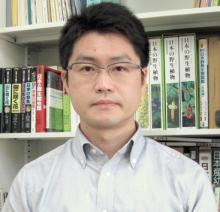20/05/2013
My hope for The Japan Awards for Biodiversity 2013 – Toshimori Takahashi
Satoyama landscapes are considered to play an especially important role in maintaining biodiversity in the future of Japan. In accordance with the 10th Meeting of the Conference of the Parties to the Convention on Biological Diversity (COP10), the Japanese Cabinet has approved a “National Strategy for Biodiversity 2012-2020,” which points to the decline of human interaction with nature in satoyama landscapes as one of the structural causes of Japan’s current biodiversity crisis.
Satoyama are cultural and ecological spaces nurtured by long-term interactions between humans and nature. In satoyama, biodiversity is maintained through human activities such as agriculture, forestry or fisheries. Like satoyama, places where people have lived in harmony with nature for long periods of time are found around the world including mauel in Korea, terroirs in France, and muyong in the Philippines.
However, the environment of satoyama in Japan has greatly changed due to the decline of agriculture, forestry and fisheries, and the changes of traditional lifestyle and culture that have taken place in the villages. Dense bamboo forests and abandoned rice paddies or fields are increasing in Japan, since satoyama are no longer carefully maintained as in the past. At the same time, due to the population increase and distribution expanse of wild birds and animals, the living areas between birds/animals and humans overlap, and such friction has occurred throughout Japan.
Topics such as a re-evaluation of the satoyama maintained by our ancestors for long periods of time in order to be sustainably blessed by nature, countermeasures against wild birds and animals, and looking for sustainable relationships between wild birds/animals and humans are among activities that can contribute to the sustainability of biodiversity. In other words, various activities contributing to the maintenance of satoyama in regions are maintaining Japanese biodiversity. I hope the Japan Awards for Biodiversity will serve as a catalyst for supporting individuals and organizations actively involved in activities to sustain satoyama landscapes.
Toshimori Takahashi (Assistant Director, Satoyama Science Research Center at Utsunomiya University)











